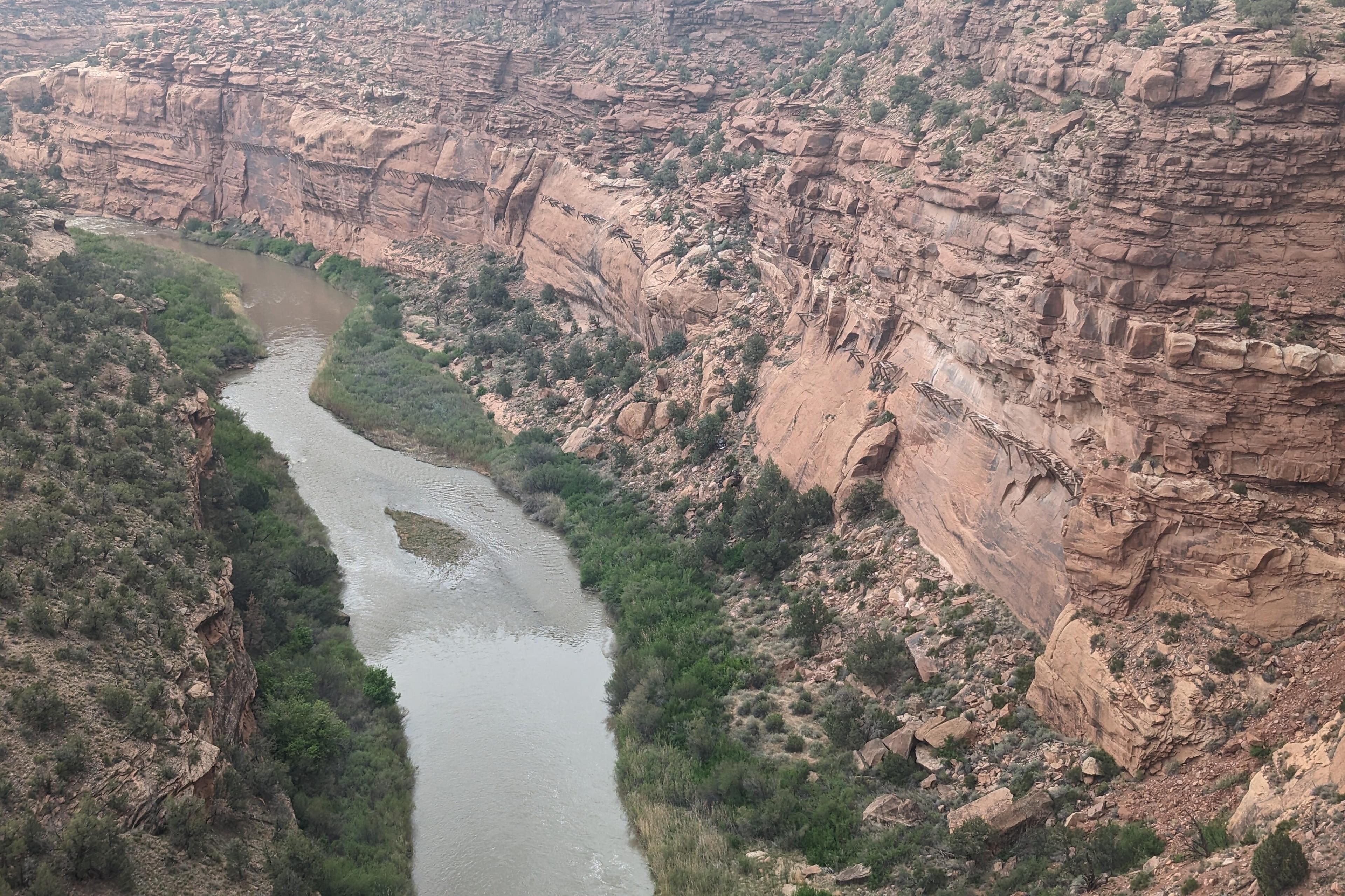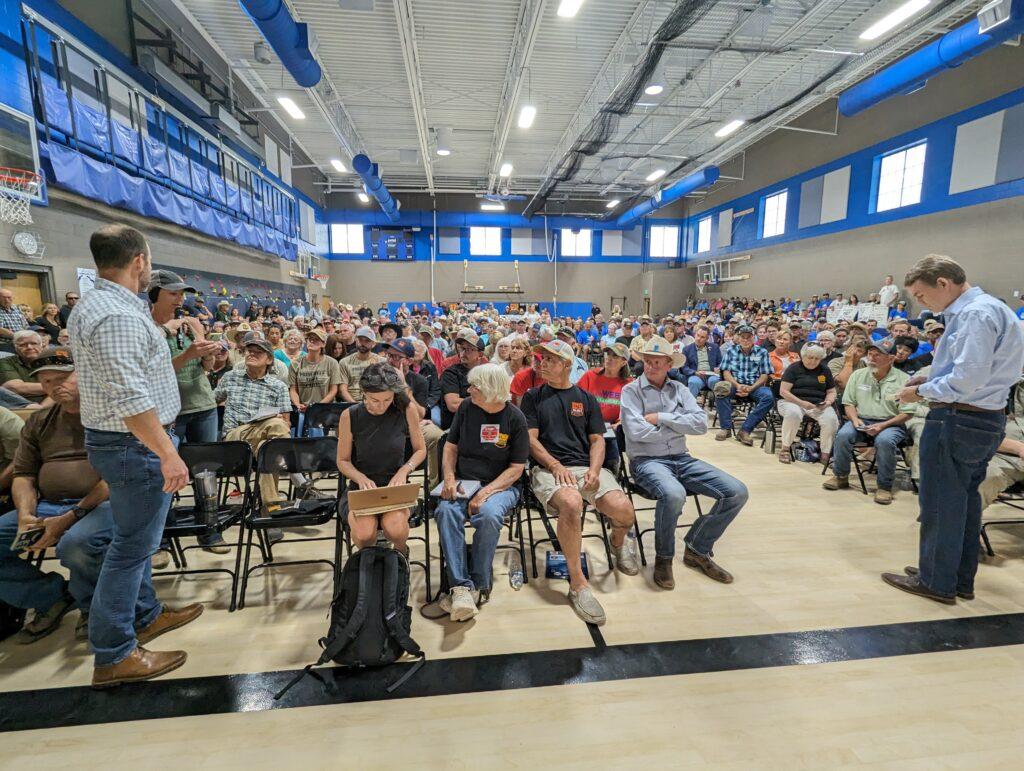
Updated at 12:08 p.m. on Tuesday, June 11, 2024.
After a weekend in western Mesa and Montrose counties, U.S. Sen. Michael Bennet found some common ground on the future of the Dolores River and the lands that surround it.
“I hope maybe this is one thing we could all agree on: I do not want this place to become Moab,” Bennet told an audience of around 400 people at the West End Schools building in Nucla.
Bennet’s visit marked the second time in two months that a Senator from Colorado has traveled to the rural ends of Mesa and Montrose counties to hear from residents about a proposal to turn around 400,000 acres into the country’s next national monument.
Sen. John Hickenlooper made his trip in late April, with attitudes in the region split over whether or not President Joe Biden should use the Antiquities Act to bring a large region of already public land under an umbrella of new protections.
The proposal, spearheaded by the group Protect The Dolores, has room for negotiation, advocates say, and is meant to meet the needs of the region. Opponents see that assurance as ambiguous and worry the protection effort amounts to a “land grab” that could upend local uses like ranching and mining. There are also concerns a new designation would invite too many new visitors, which some see as having overwhelmed Moab, Utah.
Town names like Telluride, Estes Park and Moab — with their proximity to Arches National Park and Canyonlands — have become shorthand in the Dolores monument talks as examples of stuffed destination towns that locals want to avoid creating.
Amid the prospect of more visitors, locals also worry that a monument designation may force land managers to close off areas that see too much recreation, while at the same time concentrating visitors into places ill-equipped to handle them. Rica Fulton, a supporter of the monument designation, said the process would help the area prepare for future growth with the help of additional federal resources.
“I believe the national monument provides a once-in-a-lifetime opportunity to proactively manage this landscape. A criticism I hear about the possible national monument in Mesa and Montrose counties is that it would limit access. I'd like to offer less binary framing that a monument would not limit access, but rather help plan for and improve access for the future,” Fulton said.
Like Hickenlooper, Bennet has not yet taken a position on whether he’d endorse the idea. But on Sunday night in Nucla, he did suggest that inaction may be a mistake.

“As somebody who's worried about this place looking like Moab, I’m worried that if we don't do anything about it, that we run a big risk that that's the way it's going to look. So I think we should continue to have the conversation that we're having,” Bennet said.
At least one member of the audience, Hank Miller, told CPR News he’s skeptical that Bennet was earnestly seeking input before making a decision.
“Too little, too late. It's a done deal,” Miller, a resident of nearby Naturita, said. “And as far as myself and many people around here, we can already see the writing on the wall.”
Same concerns, different senator
Opponents of the designation proposal have organized as Halt The Dolores Monument. They worry not just about the impacts of new guests, but about what changes a monument label would make to existing land users.
“There is no better steward of the land than the rancher,” said 19-year-old Morgan Weimer. “My family has been ranching in this area for five generations. We take great pride in the care and conservation of public lands. We’re raised ensuring that the land is sustainable for future generations such as myself.”
The area in question spans Montrose and Mesa counties and jumps between Bureau of Land Management and Forest Service oversight.
For months, confusion over the proposal’s implications for mining, ranching and water rights has run rampant. Proponents have said their idea would not hinder some of these critical uses, and Bennet told the crowd any plan he’d consider would have to stick to that pledge.
“I would never support a national monument that affects grazing rights or grazing leases. I would never do that. I would never [support] one that affects people's water. I would never. And I think we need to get into the details of all of that and people need to see it in black and white,” Bennet said, adding that he understood the skepticism.
Bennet is a supporter of a separate plan that affects the same river, albeit a different portion of it. The National Conservation Area introduced into Congress would protect the southern portion of the Dolores River and has bi-partisan backing to cover lands in Dolores, San Miguel and Montezuma counties. However, that plan has not advanced in Washington D.C.
Similar talks regarding a National Conservation Area have taken place for the portion of the river in Montrose and Mesa counties, but those conversations stalled. Bennet said he’s unsure if a renewed look at an NCA would be a way to accommodate all parties.
“I think we've got to work through these details over the next coming weeks, but I do think I am coming away from this conversation feeling like you can make progress and can make progress that most people that are affected will support. Obviously, there's some people in every hard decision … that will never agree, but that's also part of living in a democracy,” Bennet said.
Editor's note: This story was updated to reflect previous talks over a national conservation area. An earlier version misstated the name of the conservation talks.









